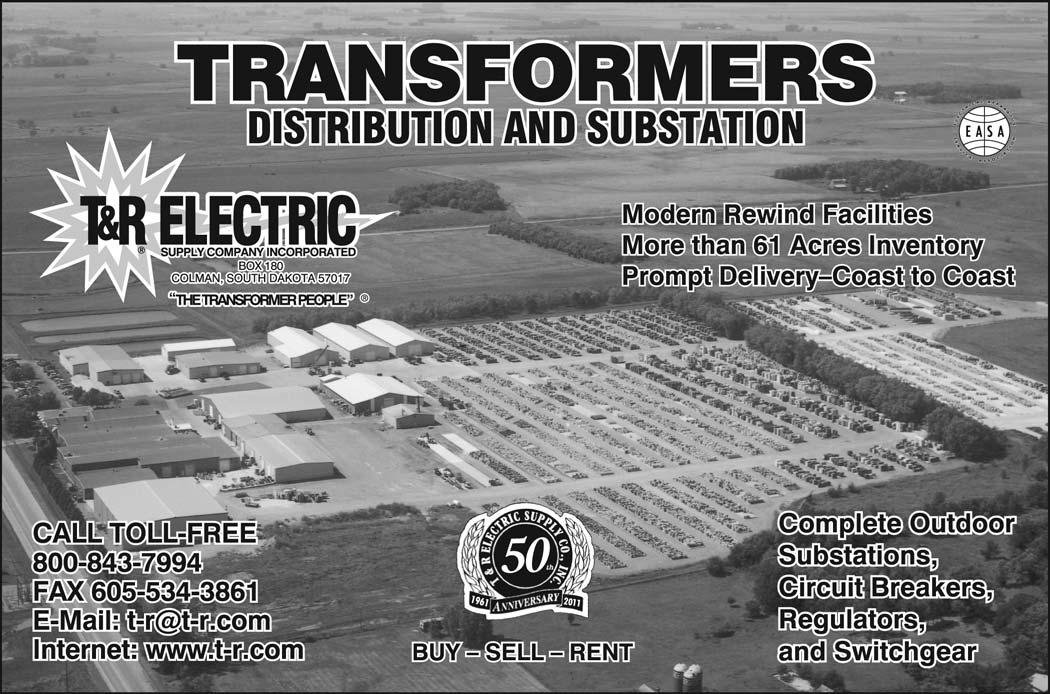
13 minute read
Prairie Idea Exchange Launch! Objective: Changing Mindsets
By Heidi Marttila-Losure and Wendy Royston
Photos by Dakotafire Media
Advertisement
As we look to the future for our rural communities, one thing is certain: What lies ahead is not going to be the same as what came before. Change is inevitable.
Will that change be good, or will it be bad? It could go either way. But at least some of that direction is within our control, suggested Joe Bartmann, facilitator for the first Prairie Idea Exchange event, held September 10 in Aberdeen, SD.
Systems: There’s more beneath the surface
Question Level:
“What is happening here?”
Action Level:
React, Quick Fix, Firefight
“What has been happening?”
“Why is it happening this way?”
“Why does this persist?”
Anticipate, Forecast
Design, Build
Transform Thinking
Iceberg model adapted from Michael Goodman
In any system, there is almost always a lot more going on than we can easily notice, and so much of the “how” and “why” of what is happening stays hidden from view, like an iceberg. When we try to change the system just by seeing what is obviously happening, we miss most of what is causing that to happen, and end up creating a quick fix that backfires or doesn’t solve our problem.
NEW GOAL: If we can address what is beneath the surface—what’s actually causing those events—we can make changes in the structures of the system to drive new kinds of action that will create the outcomes we want. THE KEY: It turns out that what happens in a human system is driven by thinking—what we believe and how we view the world. We ultimately create change by changing the way we think and challenging what we assume to be true. —Joe Bartmann “By changing the way we think about change, we change the way we act, which changes the trends and ultimately the events that will happen,” said Bartmann, process host and community coach of Rural Weaver, LLC.
Bartmann invited the economic development professionals in the room to ask themselves and one another tough questions to challenge mental models that aren’t productive.
“Sometimes what happens when we feel like we’re stuck, when we feel like ... we’re spinning our wheels no matter what kind of resources and effort and time we put into it,” he said, “what’s actually keeping us stuck is what I would call ‘limiting beliefs’—beliefs that limit our possibilities.”
Bartmann, who lives in a small town and works with rural communities all over the state, gave two examples of limiting beliefs that are common in rural places: Success is for someone else, somewhere else. And: Success is getting our community to look like it did 50 years ago.
“Without realizing it, people in our communities put on our blinders for possibility because we can only imagine our community the way it used to be,” Bartmann said.
The goal is to recognize limiting beliefs, put them aside and practice the opposite: possibility thinking.
What if we assume that we already have everything required to make our communities the kind of communities we want them to be? “It’s not somewhere else. There’s not somebody with a magic wand who is going to show up and fix things,” Bartmann said. “We have it. It’s possible.”
At the PIE event, several participants were invited to share a time when a change in thinking—setting aside a
Joe Bartmann introduces the idea of possibility thinking.
prevailing idea of what was possible, and opening hearts and minds to a different possibility—resulted in a success in the community. Those listening to the stories were then asked to describe the factors that they heard in the stories that changed mindsets and led to those successes.
Here are some of the stories they shared. (Doland’s story was also told at the event; read about its successes on page 32.)
Eureka, SD Possibility: Involving all ages
Some in the Eureka community thought one of their problems was that younger adults had no interest in community involvement. Learning they were wrong was a turning point.
In January 2014, each of the seven members of the Eureka Community Development Co. board of directors decided to invite five younger adults to the table and ask for their feedback on community happenings.
“Nothing was really happening, so we decided to find out what the community wanted,” said Wanda Jundt, executive director. Wanda Jundt, center, tells her story of getting youths involved as Rita Anderson and Joan Sacrison listen and take notes.

“When we had that meeting, they said, ‘Thank you for inviting us—we really do want to be involved,’” she recalled. “It was really eye-opening for us, because what we were hearing around town wasn’t what was true—they wanted to be involved. ... They wanted to take things into their own hands and do things their own way and not be micromanaged and just do it, and they have done it.”
The group of younger members of the community has become known as the Eureka Ambassadors since that meeting a year ago, organizing such events as holiday

fairs, Halloween “spook houses,” a community volleyball league and laser tag events.
The Eureka Community Development Co. was so happy with the result of its invitation to younger residents that it later applied for a Bush Foundation grant, which has allowed the company to make some of the ideas that came forward a reality, including a job fair, customer service training and an upcoming financial advising course.
The organization also now is reaching out to Eureka’s graduates as they attend college, inviting them back to the community by sending them care packages during times when they typically would not receive them. In addition to locally made goodies, the packages include letters from the city, Chamber of Commerce and the economic development group, as well as any professionals in that alumnus’ chosen field of study.
“(We tell them,) ‘We want you to come home, whether it’s when you’re done with college or technical school, or when you have a family, or maybe it won’t be until you retire. This is still your home, and we want you to come back,’” Jundt said. “It’s just to let them know that we’re thinking of them, and that someday we want to have them back.”
The concept began after a speaker at a conference pointed out that small towns “don’t go out of our way to tell our graduates we want them back, but ... we for sure want (them) back, and we need (them) here,” said Jundt. “That’s the message we’re trying to send.”
And the group hopes Eureka’s graduates will utilize what they have learned—to “start with yes.”
“Don’t say it can’t be done,” Jundt said. “Not everything is going to be possible, but if you start with ‘yes,’ if it’s a ‘no,’ you explain why and learn from it.”
De Smet, SD Possibility: A community-built community space
If two heads are better than one, the result of the collaborative hopes and dreams of hundreds is nothing short of amazing.
In just over six weeks, the community of De Smet, SD, raised just over $3 million to make the collective vision of most of its 1,000 residents a reality. In early 2012, a local business approached the De Smet Development Corp., asking for a wish list with which it could help, as a thankyou to the community that had supported the business for the past 100 years. Major plans on a “20-year dream plan,” according to Development Coordinator Angie Baszler, included a new community center and a sports complex. Angie Baszler tells her story of a community coming together to Craig Schroeder, Becky Hubsch and Milan Wall.

“We currently are having weddings in an old gymnasium with no air conditioning,” Baszler said.
“Just like most small towns, we have weddings with 500plus people, (so) we needed some sort of nice venue. … We also had a track that was not regulation size and a football field that was old.”
With those basic ideas in mind, the group asked for the community’s help, not just in raising funds for the project, but also in figuring out what, exactly, the project would entail. More than 100 people participated in the planning process, and Baszler said that approach paid dividends in raising the necessary funds for the project.
“We really invited people to be partners with us on this project, and share their dreams and visions with us, and then invest in (them),” she said. “It really took a lot of meetings and a lot of hard work and a lot of volunteer hours to shape this into something really incredible. … I think that if you’re willing to keep an open mind and try to reach for the stars, you’ll get there.”
Early on, the group decided to raise as many of the funds as possible, to avoid placing the cost burden on taxpayers for the city-owned property. It was decided that financial

pledges could be made for specific parts of the project, so residents could see their biggest dreams come to fruition.
“It’s something they’re passionate about, and (you’re) helping them dream big about it,” said Baszler. “We saw young people in our community give at levels that we just never dreamed. They weren’t just giving ... what’s easy. … It’s helping match their capacity with something they’re passionate about.”
The fact that millions were raised in a community of 1,000 that also was in the midst of a refurnishing fundraiser at the local hospital was beyond the economic development corporation’s wildest dreams.
“When we sat around that table (for the initial planning meeting), we thought there’s no way we’d come up with even $2 million ... (but) we said, ‘Let’s try it anyway,’” she recalled.
In November 2012, the group secured a $500,000 Community Development Block Grant.
“By the end of 2012, we had raised well over $1 million, and this thing became possible,” Baszler said. More than 930 people contributed financially to the project, which includes not only a community center and sports complex, but also a theater, and is set to open in June 2015. The entire 22,837-square-foot complex is situated across the street from the city-owned park, in the heart of De Smet.
“We have this incredible ‘central park’ feel, where during football games, we have kids playing at the park, or (playing) baseball games or whatever,” said Baszler. “We have this really cool feel that small towns are known for.”
Overcoming obstacles
Although the coming-together of the community to fund something beyond most people in De Smet’s wildest dreams—with a majority of the funds raised in under two months—may seem like a fairy tale, it did not come without a few hiccups. In early 2014, the project went to bid with the assumption that all funds were secured. But the bids came in $1 million higher than expected.
“We felt like we had raised everything we could possibly raise,” said Baszler. “When you have people giving to different areas within the building, it’s not like you can just cut off one function, because they’re all a very important

part of the center, and by cutting that off, you could possibly be cutting off the funding source of that as well.”
So, instead of giving up, the group worked even harder, reducing costs through value-added engineering and finding alternate suppliers for some of the materials. Two days before the City Council was scheduled to approve the project, however, supporters were still $500,000 short.
“The leaders of our community got together, and within 24 hours ... all but about $15,000 was raised,” said Baszler. “That last little bit came in right as (Economic Development Director Rita Anderson) was walking into the City Council meeting. She got one phone call, and then one gentleman at the city council meeting said, ‘I’ll fund the last amount,’ and then the City Council went ahead. The day before, we were all doom and gloom, but the leaders stepped up ... and I think some of them just reached a little deeper in their pockets, because this was a project they were passionate about and they believed in, and they made it happen.”
Without all 931 donors, Baszler said, the De Smet Event & Wellness Center and Sports Complex wouldn’t be set to open in just a few short months, with just a $500,000 fundraising campaign to purchase theater seats, wellness center equipment and other furnishings and supplies still to go.
“Every single gift in this mattered,” she said.
“In some ways, the $1,000 gift was just as important as the $100,000 gift, because we wanted the entire community to believe that they had a part in this.”
Roberts, Day and Marshall Counties, SD Possibility: Towns working together as a region
In the Glacial Lakes region in northeast South Dakota, “community” is defined as more than what lies inside the city limits signs.
“They said, ‘We’ve realized that we’re a community. We’re not seven different communities in three different counties; we are a community,’” said Linda Salmonson, East River Electric’s economic development manager, summarizing the attitudes of local leaders from that area after a leadership workshop about 10 years ago.
During that Leadership Plenty regional workshop, which spanned 10 weeks, 30 individuals from Webster, Sisseton, Britton, Langford, Lake City, Roslyn and

Bristol were challenged to work hand in hand, rather than as competitors, for the first few weeks, before facilitators asked them to reorganize to work on townspecific discussions.
“They said, ‘No way!’” Salmonson said with a laugh. “When they came in the door, they were seven different communities; by the time they’d been through (the training) … they had become a community.”
Since those leadership meetings, the three larger communities—Sisseton, Britton and Webster, which have a combined population of just over 5,500—became the first Dakota Rising site in South Dakota in 2008, with six area business owners recognized as fellows. The group completed the initial three-year program and did not renew participation due to financial constraints, but is able use the skills learned from the experience for building and supporting entrepreneurs in the Glacial Lakes region.
Another product of Leadership Plenty is the group known as Glacial Lakes Area Development. GLAD, which was launched in 2007 by a group of Leadership Plenty graduates, focuses on small-business lending, local business, business services training, and economic development within its five communities spanning Marshall County. Scott Amundson, GLAD’s executive director, and its volunteer board of directors has created a local business revolving loan fund of $1 million and works hand in hand with Grow South Dakota and other regional partners.
“The communities (in Roberts, Day, and Marshall counties) recognize that they’re a region, and they are—to some extent—dependent upon one another,” Salmonson said. “As a result of learning together … they came to the realization that they needed each other, and they weren’t in competition with each other. They recognized what’s good for one community benefits the others.”
Salmonson said the same concept can be replicated in other regional communities, too.
“Anytime people work and learn together, it gives them an extended opportunity to communicate,” she said. “You’ll see them recognize that they are stronger together than they are standing alone.”
Used with permission of Dakotafire Media. Subscription information is available at www.dakotafire.net/getfiredup.











